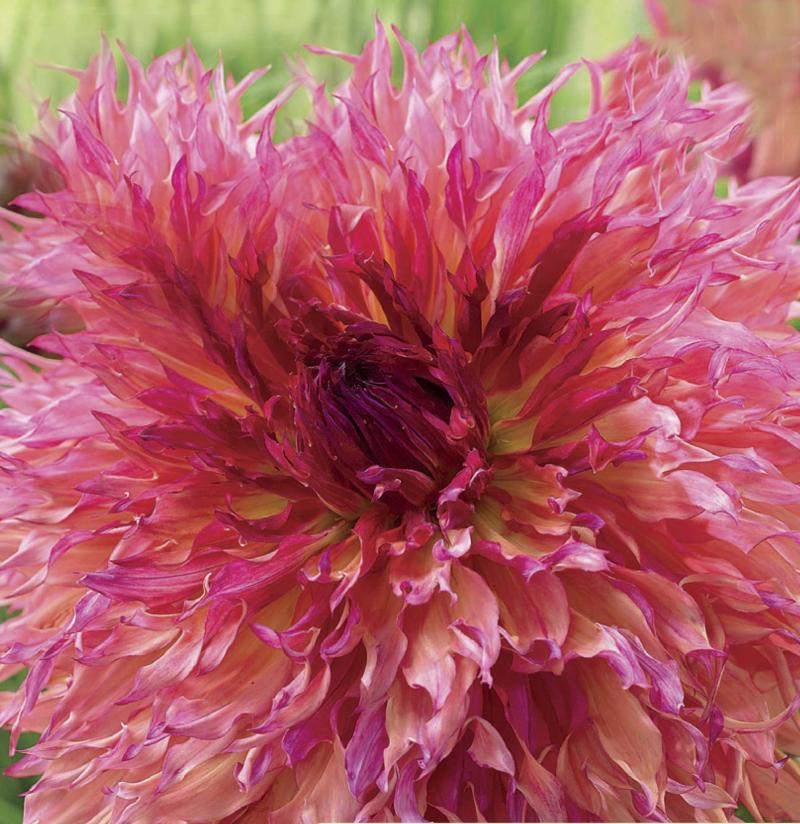
Florissa
Fertilizer fuels the big, bodacious blooms of dahlias such as Myrtle's Folly.
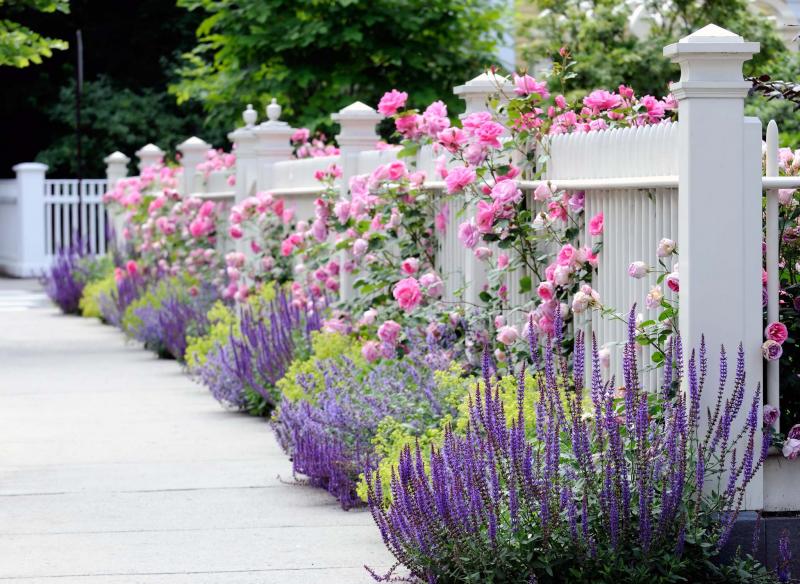
Deborah Silver
To promote sustained healthy growth in perennials, the best formula is to feed your soil.
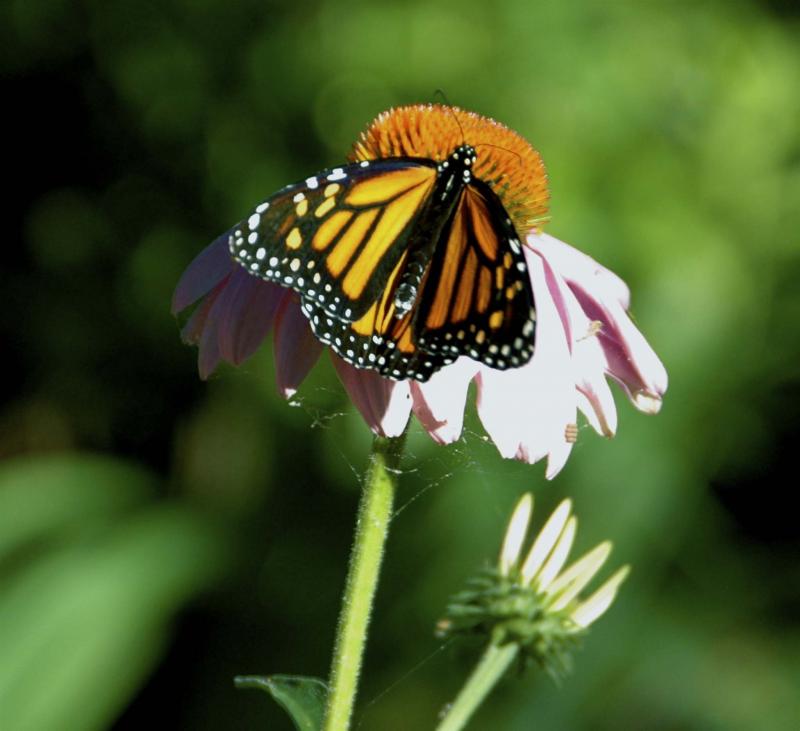
Becky Slater
Chemical fertilizers are not the best choice for native prairie plants or pollinators.
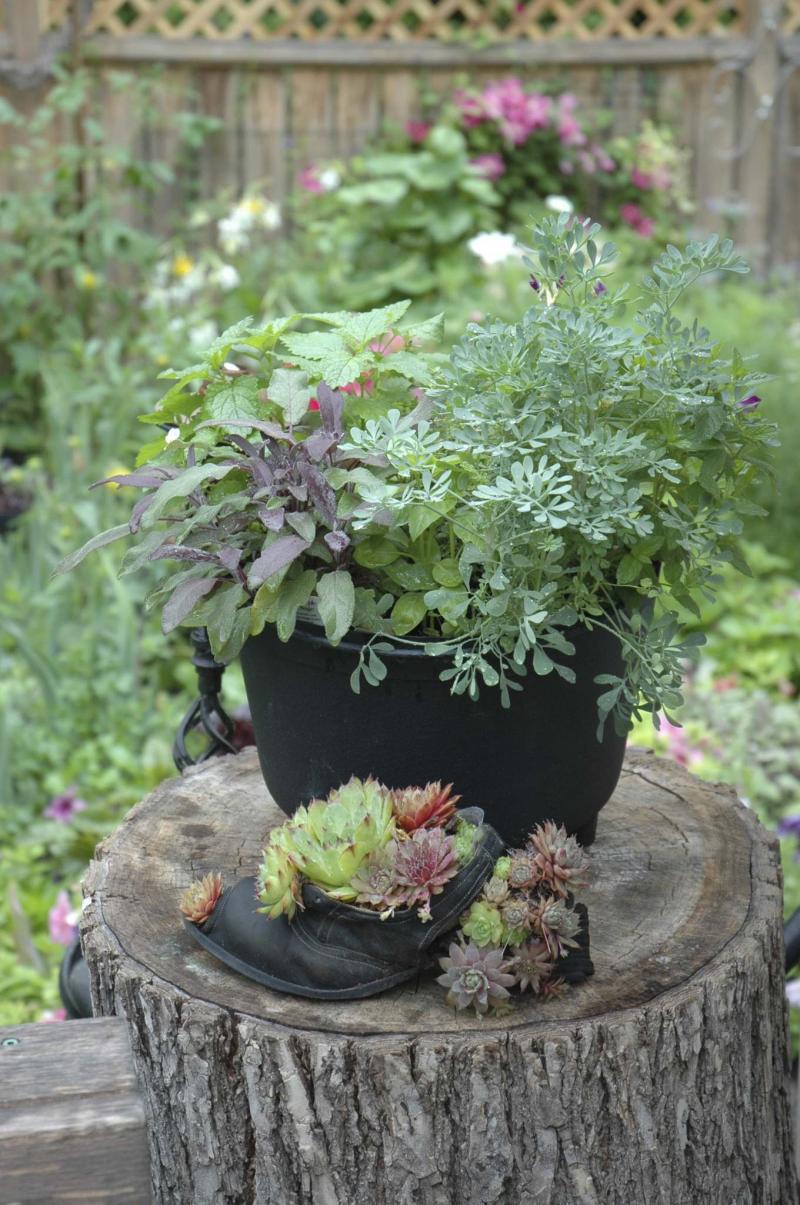
Teresa Lopata
Keep herbs happy with sunlight and water. Use only organic enhancements for edibles.
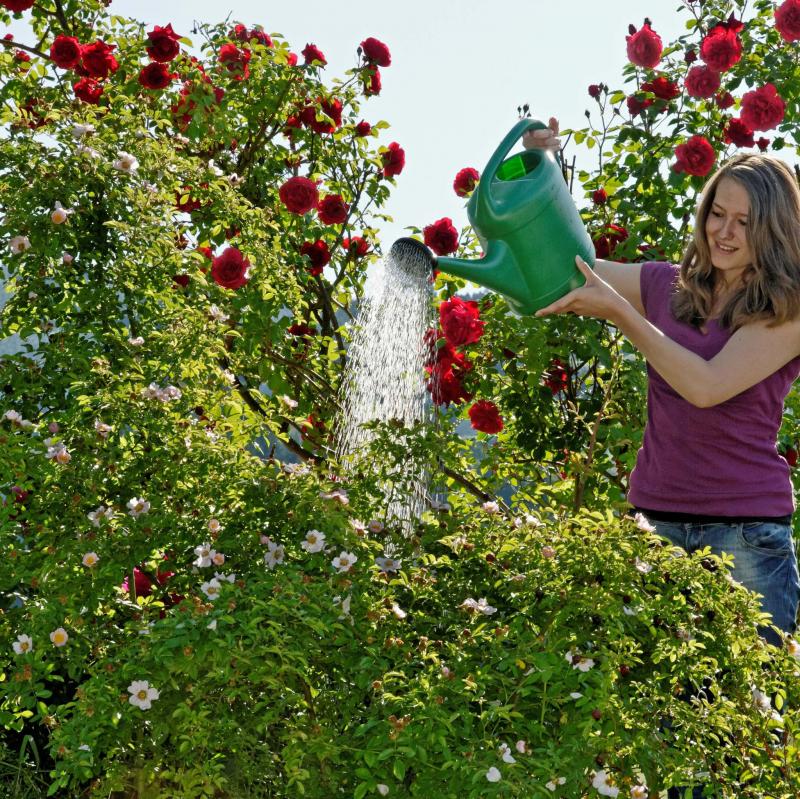
Christiane Maute
Water soluble fertilizer can be added as a foliar application to roses.
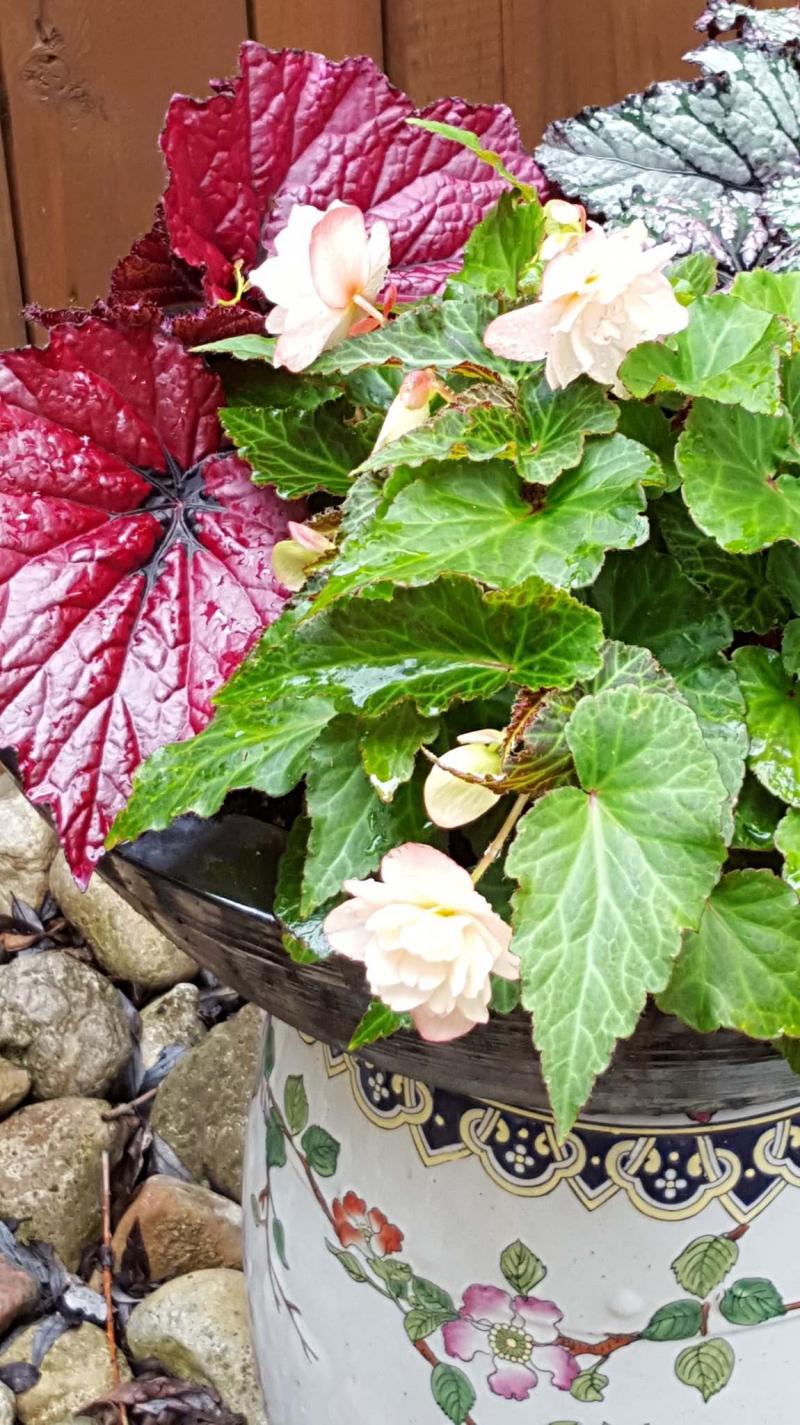
Colleen Zacharias / Winnipeg Free Press
Use a diluted water soluble fertilizer sparingly to prevent burning the magenta foliage of T Rex Ruby Slippers.
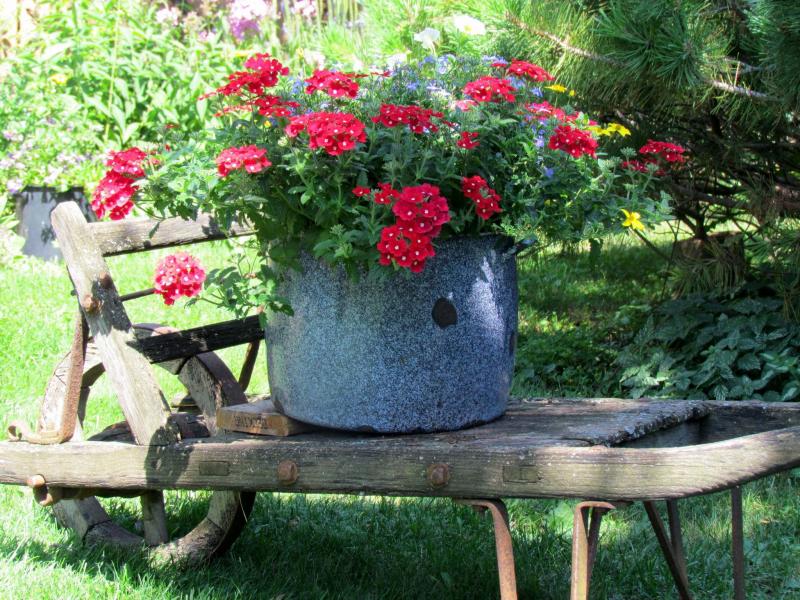
Colleen Zacharias
Repeat waterings and heavy rainfall make short work of fertilizers in container plantings.
‘Florabundance’ is a word you will not find in the dictionary — although it aptly describes the garden in July. Beds, baskets and containers are positively exuberant with the lush green growth of plants and their perfect blooms.
Weather has a significant impact on our plants. To ensure their continued healthy growth throughout the halcyon days of a prairie summer characterized by a baking sun and punctuated by the potential for high winds and the occasional ferocious drenching, we must pay attention to what our plants need in order to thrive. In addition to regularly deadheading and maintaining a watering schedule, good fertility is key.
In the wild, Mother Nature does a fine job of providing for plants with little more than the basics of sunlight, timely moisture and a rich layer of humus that accumulates naturally through the life cycle of plant growth and decay.
In an urban setting, many homeowners incorporate organic materials such as compost, leaf mold or well-rotted manure into the garden in early spring to give perennials and bedding plants a good start. Good quality compost increases soil aeration and helps to make our heavy clay soil more friable or crumbly, hence easier for roots to penetrate and flourish. Compost also increases moisture retention, improves drainage, and adds some nutrients that provide an advantage to beneficial soil organisms and promote healthy growth.
David Neufeld and Magdalene Andres are co-owners of Room to Grow, located in Boissevain. Specializing in medicinal herbs and open pollinated vegetable seedlings which they supply to markets throughout southern Manitoba including Winnipeg, Neufeld and Andres are committed to growing organically.
When Neufeld wanted to replace their use of peat moss with something more fibrous and richer in nutrients, he began experimenting with various soil mix recipes and ratios of animal manure for nutrients and sand for water percolation. Today he relies on well-rotted horse manure which he says is much more fibrous than cattle or pig manure. Unlike chicken manure, it won’t burn the roots of plants, he says.
Neufeld uses a leaner mix for herbs because they are not as dependent on additional nutrients in the soil.
He is so pleased with the results that he questions the lack of a program in Manitoba to utilize all of the manure from horses. Of course, it would be essential, he says, to ensure that the composted manure was free of herbicides.
"Some herbicides are particularly persistent," says Neufeld, "such as the types used on pastures and ditches."
Neufeld adds compost to his garden soil in spring or fall and recommends topdressing with a 2.5 cm layer in July. "Mulching soil is essential," he says, "as rain can pound soil. Soil surfaces can also become hard and caked on the surface as a result of wet-dry cycles. Simply pull your mulch back, apply the compost, then cover again with mulch."
Is compost enough to sustain plants throughout the entire growing season? While perennials thrive in soil that has been amended with compost, their rapid growth in summer and continuous bloom production can be fuelled by the addition of fertilizer.
Roses, particularly those with more than one bloom period, benefit from supplemental fertilizer approximately once a month during June and July. This is in addition to an application of organic amendments at the start of the season that may include bone meal, fish meal and Epsom salts.
Lilies benefit from a small amount of supplemental fertilizer just prior to or immediately following its bloom period. This allows the bulb to replenish its food supply before winter.
Plants such as echinacea, rudbeckia, lavender, butterfly weed and succulents prefer a leaner soil and shouldn’t require supplemental fertilizing during the summer months.
Chemical fertilizer must be applied judiciously. Feeding hydrangeas, for example, with an application of slow-release plant food in spring is generally adequate. Too much fertilizer can result in burned foliage and few or no blooms.
Alternatively, hydrangea shrubs in alkaline or poorly aerated soils sometimes suffer from an iron deficiency, manifested by younger leaves with yellowing between the veins. A foliar or soil application of water soluble iron chelate addresses the problem in a matter of days.
Annuals that are grown in potting medium have different needs altogether. The nutrients in potting medium deplete quickly once the watering schedule is underway even with the initial application of a granular slow release fertilizer. Frequent or heavy rainfall causes nutrients to leach quickly through the soil mix. The rapid growth of annuals combined with months-long bloom production makes an even greater demand on what the containerized environment is able to supply.
In addition, some annuals are more demanding than others. Dahlias and tuberous begonias, for example, produce a large number of blooms and respond well to the addition of a dilute balanced fertilizer every two weeks. Rex begonias, on the other hand, produce no flowers and can be susceptible to fertilizer burn from the use of water-soluble fertilizer, which should only be applied in diluted form, if at all.
I have found success with Gaia Green Power Bloom, an organic fertilizer with ingredients such as fish bone meal, steamed bone meal, glacial rock dust, rock phosphate, greensand, kelp meal, gypsum, mined potassium sulphate and bat guano. Applied monthly during the growing season to both beds and as a topdressing for containers and baskets, it contains both organic and biological ingredients.
Glacial rock dust, for example, is a natural mineral product that aids in improving soil structure. It is a good source of calcium, iron, magnesium and potassium.
Fish bone meal is high in phosphorous and promotes rooting and flower development. Bat guano is also a good source of natural phosphorous. It is used in annual containers to promote bloom production and enhances yield and flavour in vegetables.
Joanne DePencier, owner of Earthly Designs & Ventures, a Winnipeg-based wholesale grower and supplier to many local greenhouses, incorporates Gaia Green Power Bloom into the soil mix for all of the plants she grows.
Admittedly, this has only short-term value until annuals are brought home and transplanted into larger containers and an ongoing nutrition regimen gets underway. When plants are planted into a garden bed where the soil has been built over time with the proper microbes and beneficial bacteria, she says, an environment is created of nutrients that are readily available to your plant whenever it needs them.
"When you think about feeding your plants," says DePencier, "the best formula is to feed your soil."
Michael Dean is the creator of Gaia Green Organic Fertilizers. Started in 1990 in Grand Forks, B.C., Gaia Green is sold across Canada. Dean is a passionate advocate for shifting the emphasis from fertilizing plants to one of feeding and remineralizing the soil.
"There are over 75,000 different species of beneficial bacteria," Dean says, "and 25,000 to 30,000 species of beneficial fungi that live naturally in symbiosis in our soils and these organisms convert nutrients." Each of these beneficial organisms have different roles in breaking down nutrients. Some, says Dean, digest minerals such as manganese, boron and selenium, and when they are provided with their food source, their population explodes.
Dean includes a wide variety of ingredients in his blended products to activate as many of these species of bacteria and fungi as possible and convert these natural nutrients into plant available forms. By activating the soil food web, the resulting healthy soil ecosystem, says Dean, has a profound effect on plant vitality, allowing it to function at its highest potential. "Healthy plants are more naturally resistant to disease and pest infestation and have greater drought tolerance," he adds.
Dean eschews the conventional methodology that says chemical fertilizers consisting mainly of nitrogen, phosphorus and potassium (NPK) are the best approach. "Chemical fertilizers are in ionic form, and they are totally soluble. A third of it washes away into the ground water, creating environmental pollutants, and another third volatizes into the air in hot weather, actually evaporating."
In Manitoba, Gaia Green products are available at Sage Garden Greenhouses and Jardins St-Léon Gardens.
While usage of synthetic fertilizers for perennials must cease at the start of August so new growth has a chance to harden off in time for winter, organic plant fertilizer can continue to be used until the first week in September.
colleenizacharias@gmail.com
Notice:
The Manitoba Regional Lily Society will host its 32nd annual lily show next Friday and Saturday at St. Vital Centre, from noon to 6 p.m.




